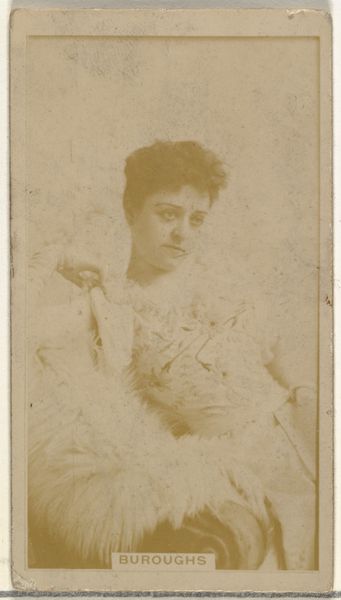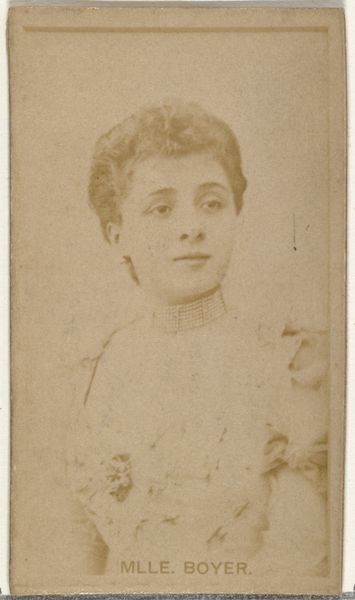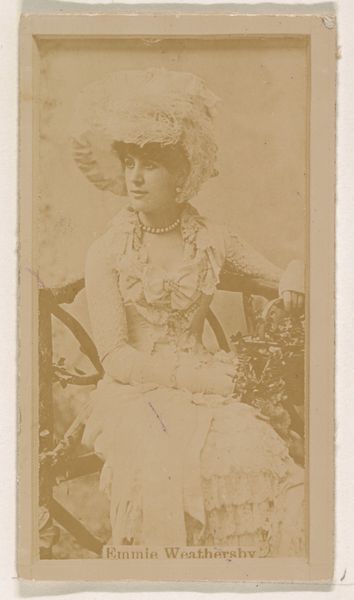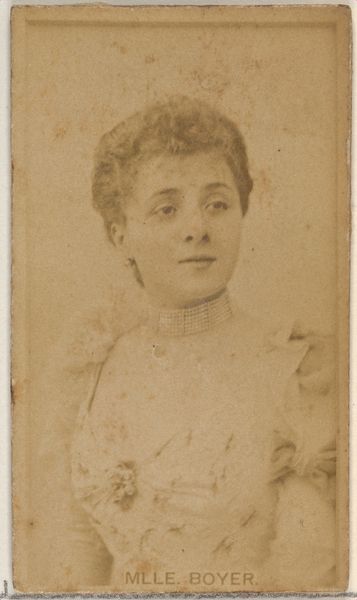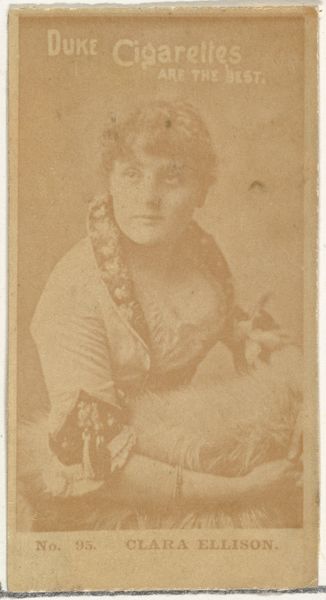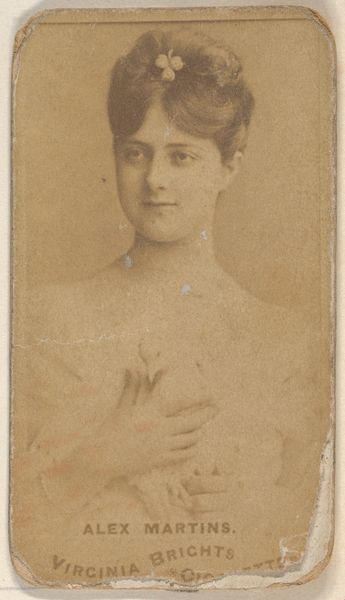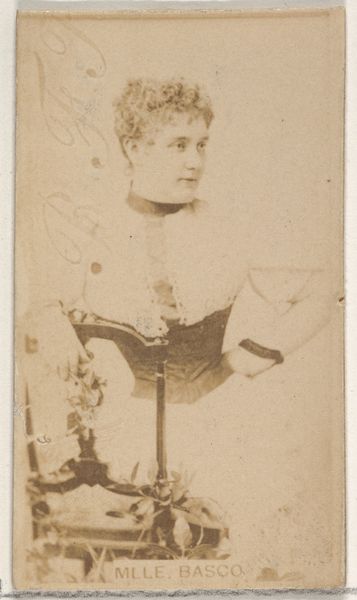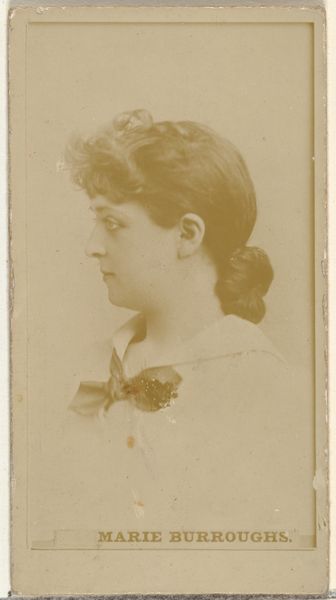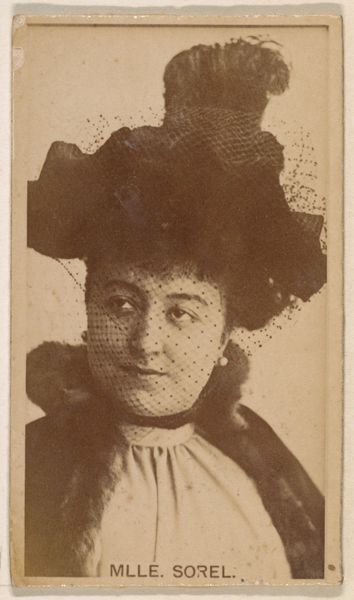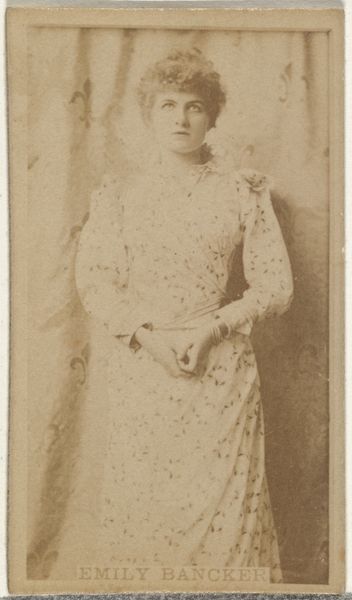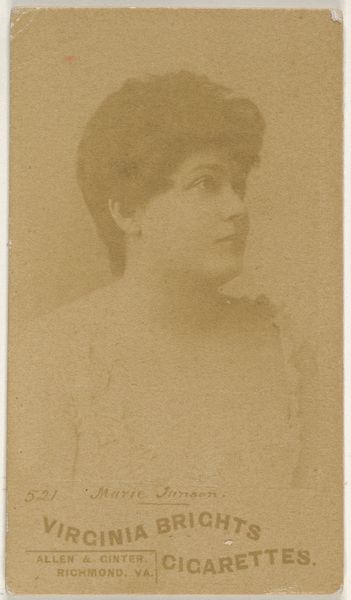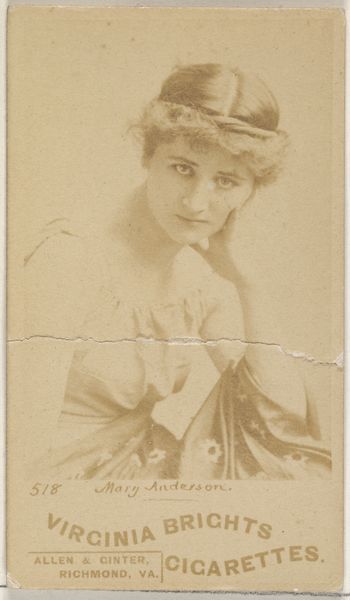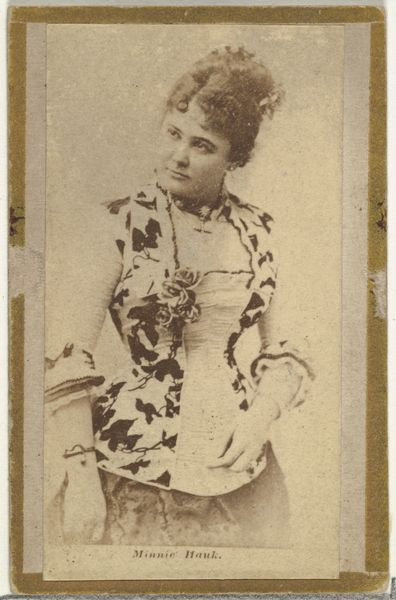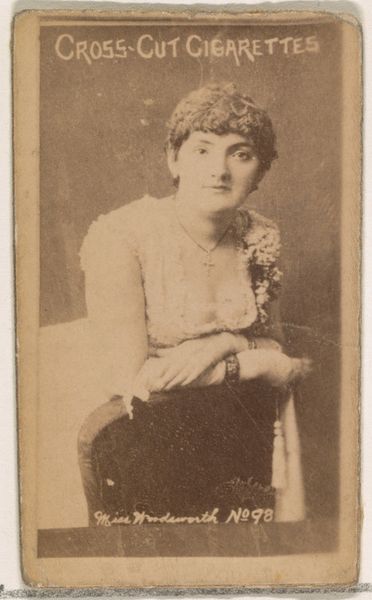
Marie Wright, from the Actresses series (N245) issued by Kinney Brothers to promote Sweet Caporal Cigarettes 1890
0:00
0:00
drawing, print, photography
#
portrait
#
drawing
# print
#
photography
Dimensions: Sheet: 2 1/2 × 1 7/16 in. (6.4 × 3.7 cm)
Copyright: Public Domain
Curator: This is a photograph of Marie Wright, taken around 1890. It’s part of the “Actresses” series, N245, produced by Kinney Brothers to advertise Sweet Caporal Cigarettes. Editor: There’s an immediate sense of bygone glamour, isn’t there? The sepia tone gives it an incredible antique feel. The texture seems almost…delicate, porous even. Curator: Absolutely. The monochromatic palette is key here. The image's soft gradation reinforces the pictorial depth, accentuating Wright's features while blending her somewhat seamlessly with the support of the chair and adjacent background space. Editor: Interesting, but doesn’t it seem like the primary intent wasn’t aesthetic beauty, but mass reproduction? These tobacco cards were printed using photographic and drawing processes—consider the resources used and intended consumption—the photograph serving a purpose beyond "art." The use of her image provided, what we might recognize today, celebrity endorsement of goods for purchase. Curator: Well, the photograph offers more than just a commodity, but is, fundamentally, a representation of form. The soft contours of Marie’s face are balanced by the curves of the wrought iron of the chair and by her delicate pose. The line created from the corner of her left brow, and the fall of her drapery culminate in an aesthetic order— Editor: I wonder if it would also be important to discuss the workers who physically printed the cards, or the farmers cultivating tobacco in the fields. It seems vital that when encountering these kinds of pieces, that we do not just look at subject or artist—to recognize all the forms of labor materialized within it. Curator: I concede that contextualising its economic production adds layers of meaning. However, to only see its manufacture overshadows the photograph's success in creating a cohesive visual structure. Editor: But maybe we can look for those aesthetic aspects through labor and economics. Perhaps how Kinney Brother's distribution was so impactful due to their investment in print and agriculture? Curator: Point taken. On reflection, the piece encourages viewing through numerous interpretative lenses. Editor: I find it allows consideration of how much history resides within its material construction.
Comments
No comments
Be the first to comment and join the conversation on the ultimate creative platform.
